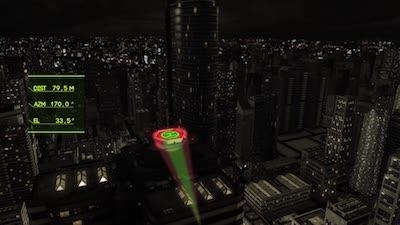Fri, Oct 06, 2017
Project Eagle Aims At Improving Safety And Automation Capabilities For Existing And Future Platforms
In line with its strategy of innovation for the future of vertical flight, Airbus Helicopters is developing an experimental on board image processing management system aimed at performing automatic approaches and landing in challenging conditions, as well as paving the way for future sense & avoid applications on autonomous vertical take-off and landing (VTOL) systems.

Codenamed Eagle, for Eye for Autonomous Guidance and Landing Extension, this system federates the entire helicopter’s image processing functions and feeds them into the avionics system, thus improving the crew’s situation awareness and reducing the pilot’s workload by automating and securing approaches, take-off and landing in the most demanding environments. Ground tests of Eagle have been ongoing since May this year and initial flights tests on a testbed helicopter will begin shortly.
“While existing missions such as search and rescue and offshore transportation will benefit from Eagle’s capabilities, the system will also help address future requirements for operations in urban environments”, said Tomasz Krysinski, Airbus Helicopters Vice-President Research & Technology. “Ultimately, thanks to its ability to provide increased situation awareness, Eagle will also contribute to improve the safety, autonomy and performance of future unmanned vehicles.”
The system, which could be embedded in a variety of existing and future Airbus VTOL vehicles, relies on a gyro-stabilized optronics package, which includes three high resolution cameras and state-of-the-art processing units, as well as on-board video analytics providing advanced functionalities such as object detection and tracking, digital noise reduction as well as deep learning.
Future versions of the Eagle system will also integrate a laser, which combined with the high processing capability could open the door to other applications such as a new generation of search lights, obstacles detection and 3D terrain reconstruction.
(Image provided with Airbus Helicopters news release)
More News
Pilot Applied Full Aft Stick And Nose-Up Trim, But The Airplane Remained On The Runway Analysis: The pilot reported that a preflight inspection and flight control checks revealed n>[...]
A Few Questions AND Answers To Help You Get MORE Out of ANN! 1) I forgot my password. How do I find it? 1) Easy... click here and give us your e-mail address--we'll send it to you >[...]
From 2022 (YouTube Edition): Before They’re All Gone... Humankind has been messing about in airplanes for almost 120-years. In that time, thousands of aircraft representing i>[...]
Advanced Air Mobility (AAM) A transportation system that transports people and property by air between two points in the NAS using aircraft with advanced technologies, including el>[...]
Aero Linx: MQ-1B Predator The MQ-1B Predator is an armed, multi-mission, medium-altitude, long-endurance remotely piloted aircraft that is employed primarily as an intelligence-col>[...]
 NTSB Final Report: Douglas A-4K
NTSB Final Report: Douglas A-4K ANN FAQ: Q&A 101
ANN FAQ: Q&A 101 Classic Aero-TV: PBY Catalina--From Wartime to Double Sunrise to the Long Sunset
Classic Aero-TV: PBY Catalina--From Wartime to Double Sunrise to the Long Sunset ANN's Daily Aero-Term (07.01.25): Advanced Air Mobility (AAM)
ANN's Daily Aero-Term (07.01.25): Advanced Air Mobility (AAM) ANN's Daily Aero-Linx (07.01.25)
ANN's Daily Aero-Linx (07.01.25)



